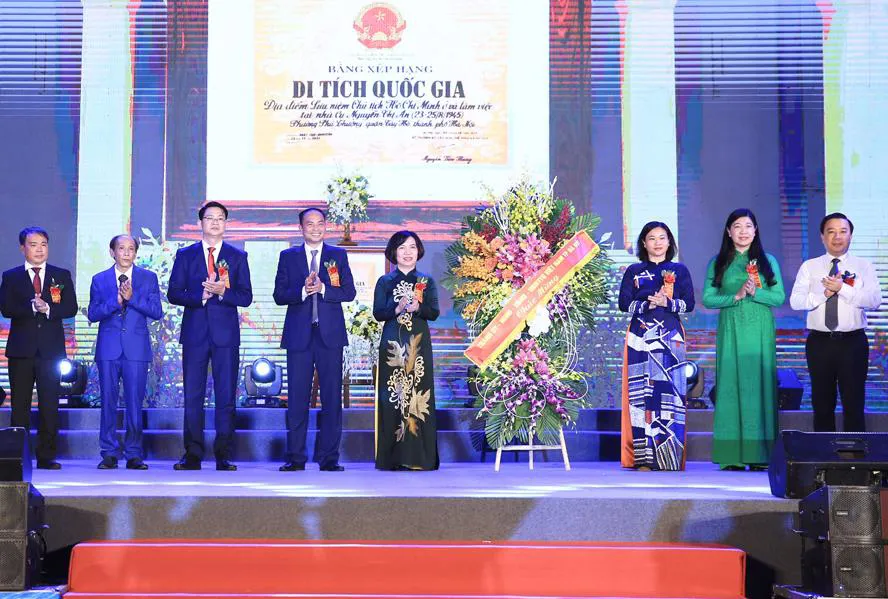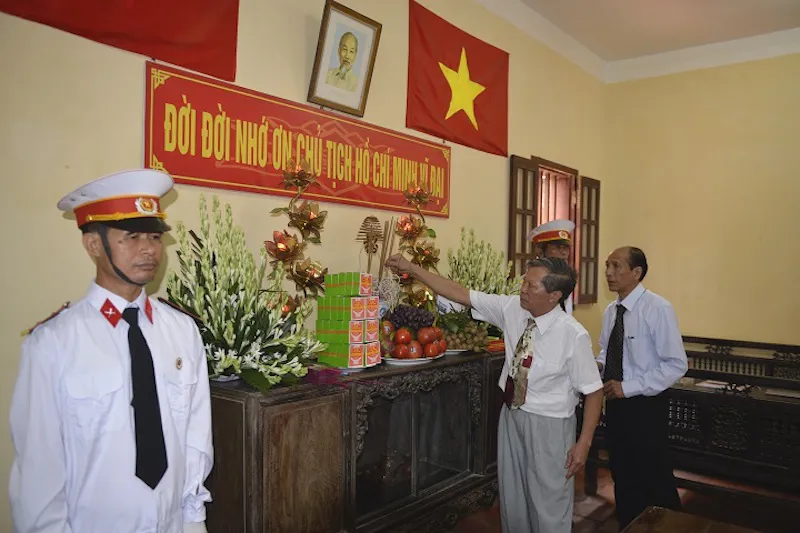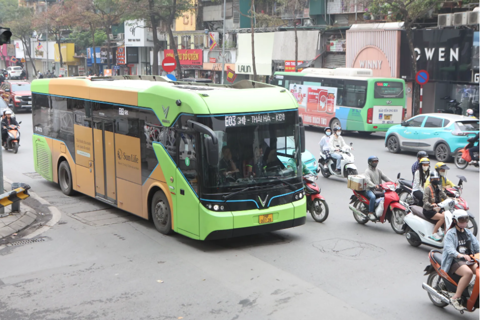Hanoi house linked with late President Ho Chi Minh recognized as national relic site
The house used to host President Ho Chi Minh for two days between August 23-25, 1945 on his journey from the Viet Bac resistance base to Hanoi to declare national independence, marking the founding of the Democratic Republic of Vietnam.
A house in Hanoi’s Tay Ho District hosting President Ho Chi Minh from August 23 to 25, 1945 has just been recognized as a national historical relic site by the Ministry of Culture, Sports and Tourism.
The house belongs to Mrs. Nguyen Thi An, an elderly from Phu Thuong ward of Tay Ho District.
Standing Deputy Secretary of the Hanoi Party Committee Nguyen Thi Tuyen and the city’s leaders present flowers to congratulate Tay Ho District on receiving the National Relic Certificate. Photo: Pham Hung/ The Hanoi Times |
Nguyen Thi An was the wife of Cong Ngoc Lam, who served as chief of a “tong” (an administrative unit higher than a commune and lower than a district in the past) in Phu Gia hamlet of Phu Thuong Commune, Tu Liem District (now Phu Thuong Ward of Tay Ho District).
This area was one of the Party Central Committee’s revolutionary bases from 1941 to 1945, sheltering many senior Party officials such as Truong Chinh, Hoang Van Thu, Le Duc Tho, and Hoang Tung.
An’s house used to host President Ho Chi Minh between August 23-25, 1945 on his trip from the Viet Bac resistance base to Hanoi to declare the national independence, marking the foundation of the Democratic Republic of Vietnam, now the Socialist Republic of Vietnam, on September 2 the same year.
In the autumn days of 1945, in the boiling revolutionary atmosphere throughout the country, President Ho Chi Minh made the decision to leave the Dinh Hoa Safety Zone in the northern province of Thai Nguyen for Hanoi in order to lead the uprising to regain power for the people.
Arriving in Hanoi on August 23, 1945, President Ho Chi Minh first visited the communal temple of Phu Xa, Phu Gia (currently Phu Thuong, Tay Ho). After that, Uncle Ho and the delegation of the Central Committee took shelter in the house of Nguyen Thi An and her son, Cong Ngoc Kha, one of the first five Party members of Phu Thuong Village.
The room to remind late President Ho Chi Minh at the house. Photo: Lai Tan/ The Hanoi Times |
The house of Nguyen Thi An remain intact through historical ups and downs and is currently watched over by her paternal grandson Cong Ngoc Dung.
According to Dung, at that time no one in the family and even the revolutionaries there knew that the old man with long beard and gray hair, who worked day and night while having very little sleep, was President Ho Chi Minh (then known as Nguyen Ai Quoc). On August 25 afternoon, Uncle Ho had a talk with Kha, thanked his family for hosting him for a few days, said goodbye to the whole family and said: “I will come back and visit the family one day.”
On September 2, 1945, An's family members along with a lot of revolutionaries in Phu Thuong were invited to Ba Dinh Square to listen to Uncle Ho read the Declaration of Independence.
With 14 objects and tens of documents and images related to the late President, the house was recognized as a memorial house of Ho Chi Minh and has been opened to visitors since 1996. In 2019, it was listed as a municipal-level historical relic site.










